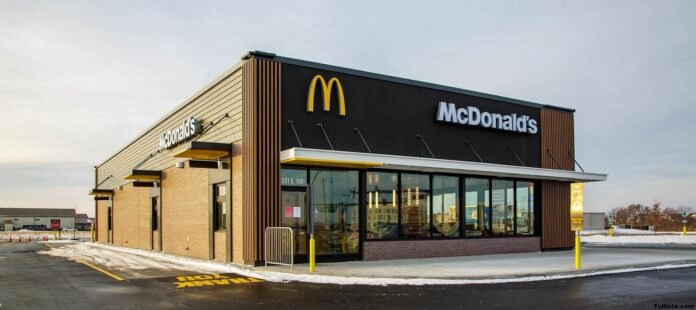Introduction to McDonald’s business model
Welcome to the fascinating world of McDonald’s – where burgers, fries, and real estate intertwine to create a powerhouse business model. Ever wondered why there seems to be a Golden Arches restaurant on every street corner? Well, it’s not just about serving up Big Macs; McDonald’s has strategically positioned itself as a major player in the real estate game. Let’s dive into how this fast-food giant has leveraged its properties to become more than just your average burger joint.
The history of McDonald’s real estate ownership
McDonald’s real estate ownership is not just a recent development; it has been ingrained in the company’s DNA since its early days. Back in the 1950s, when Ray Kroc took over McDonald’s from the original founders, he recognized the potential of owning land where the restaurants were located.
Kroc understood that by owning both the land and the franchise rights, McDonald’s could secure long-term stability and control over its operations. This strategic decision laid the foundation for McDonald’s to become one of the largest commercial real estate owners in the world.
Over time, McDonald’s continued to acquire more properties strategically located near highways, shopping centers, and busy intersections. By doing so, they not only ensured prime locations for their restaurants but also created a lucrative revenue stream through leasing or selling these properties.
Today, this unique approach to real estate ownership sets McDonald’s apart from other fast-food chains and continues to be a key driver of its financial success.
How McDonald’s uses real estate to generate revenue
McDonald’s has mastered the art of leveraging its vast real estate holdings to drive revenue like no other fast-food chain. By owning a significant portion of its locations, McDonald’s diversifies its income streams beyond just burger sales. How do they do it? Well, when franchisees lease properties from the company, McDonald’s not only collects rent but also benefits from property appreciation over time.
This strategic approach allows McDonald’s to generate steady cash flow while retaining ownership and control over prime locations. Plus, by owning the land and buildings, McDonald’s can dictate site selection for new restaurants and ensure consistency across their global footprint.
In essence, McDonald’s isn’t just flipping burgers; it’s playing the long game by building a lucrative real estate portfolio that serves as a strong foundation for sustainable growth.
Advantages and disadvantages of owning real estate for a fast food chain
Owning real estate for a fast food chain like McDonald’s comes with its set of advantages and disadvantages. One major advantage is the steady stream of rental income that owning properties can provide. This offers a reliable revenue source outside of food sales, helping to stabilize the business during economic fluctuations.
Moreover, owning the land and buildings gives McDonald’s more control over their locations. They can strategically choose prime spots for new restaurants, ensuring visibility and accessibility to customers. This also eliminates the risk of landlords increasing rents or not renewing leases, providing long-term security for the brand.
On the flip side, investing in real estate requires significant capital upfront. Acquiring properties can be costly and may tie up funds that could be used for other aspects of the business. Additionally, market fluctuations can impact property values, potentially affecting profitability if property values decline.
Despite these challenges, McDonald’s successful real estate strategy has proven to be a lucrative approach in driving revenue and securing prime locations for their restaurants.
Impact on franchisees and the overall company success
Owning real estate has significant implications for McDonald’s franchisees and the overall success of the company. For franchisees, this model provides a sense of stability as they operate in established locations with high foot traffic. It also allows them to focus on running their businesses rather than worrying about property management.
Additionally, owning the properties gives McDonald’s more control over its brand image and standards across all locations. Consistency is key in the fast-food industry, and by owning the real estate, McDonald’s can ensure that every outlet meets its quality standards.
From a financial standpoint, this strategy has proven to be lucrative for McDonald’s. The rental income from franchisees adds another stream of revenue to the company’s bottom line, making it less dependent on fluctuating sales figures.
This unique approach to business not only benefits individual franchise owners but also contributes significantly to the long-term success and stability of McDonald’s as a whole.
Other businesses that have adopted a similar real estate strategy
Many successful businesses have taken a page from McDonald’s real estate playbook. One notable example is Starbucks, which strategically acquires prime locations for its coffee shops. By owning the properties, Starbucks can control costs and drive revenue through rental income. Another business that has leveraged real estate effectively is Walmart. The retail giant not only owns many of its stores but also invests in shopping centers to create additional streams of income.
Similarly, Chipotle Mexican Grill follows a similar strategy by purchasing its restaurant sites instead of leasing them. This approach gives Chipotle more flexibility and stability in the long run. Domino’s Pizza has also dabbled in real estate ownership by buying properties for its franchise locations, enabling the company to benefit from property appreciation over time.
Adopting a real estate-centric business model can provide companies with financial advantages and strategic benefits in today’s competitive market landscape.
Future implications for McDonald’s as a real estate business
As McDonald’s continues to expand its real estate portfolio, the future implications of this strategy are significant. By owning a vast array of properties worldwide, McDonald’s secures long-term stability and control over its locations. This gives the company leverage in negotiations with franchisees and allows for strategic decision-making regarding store placements.
Furthermore, as property values increase over time, McDonald’s stands to benefit from appreciating assets that can be leveraged for further growth opportunities. The real estate business also provides a steady stream of rental income, diversifying the company’s revenue streams beyond just food sales.
However, managing such an extensive real estate portfolio comes with its challenges. Market fluctuations and economic downturns could impact property values and rental incomes. Additionally, maintaining properties requires ongoing investments in upkeep and renovations to ensure they remain attractive to customers.
McDonald’s transformation into a real estate powerhouse positions it well for continued success in the ever-evolving fast-food industry landscape.
Conclusion
McDonald’s has successfully leveraged its real estate assets to become more than just a fast-food chain. By owning a significant portion of its properties, McDonald’s has established itself as not only a burger and fries business but also as a major player in the real estate industry.
The strategic decision to own prime locations and lease them back to franchisees has allowed McDonald’s to create multiple revenue streams and increase profitability over the years. This innovative approach has set them apart from other fast-food chains and solidified their position as a powerhouse in both the food and real estate sectors.
As McDonald’s continues to evolve and adapt to changing consumer preferences and market dynamics, its unique real estate strategy will likely play a crucial role in shaping its future success. By capitalizing on their vast property portfolio, McDonald’s is well-positioned to navigate challenges, drive growth, and remain a dominant force in the global fast-food industry for years to come.


